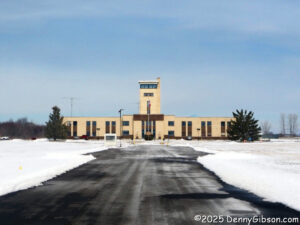 The nearby National Voice of America Museum of Broadcasting reopened last month after a seven-month closure for refurbishing. I visited the museum back in 2022 but had been hearing about the update and decided to fill an idle Saturday with a return visit. One thing that is different from the last time is noticeable from the outside. Visitors now enter from the side rather than the front. I’m guessing that’s part of the recent rework, but it might have been that way beforehand.
The nearby National Voice of America Museum of Broadcasting reopened last month after a seven-month closure for refurbishing. I visited the museum back in 2022 but had been hearing about the update and decided to fill an idle Saturday with a return visit. One thing that is different from the last time is noticeable from the outside. Visitors now enter from the side rather than the front. I’m guessing that’s part of the recent rework, but it might have been that way beforehand.
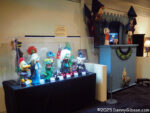
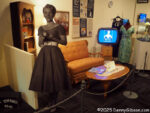 I arrived a few minutes ahead of the day’s first guided tour, and I used those minutes to look over the Cincinnati radio and TV displays near the entrance. Cincinnati was a real leader in the early development of both forms of broadcasting. The pictures are of the Larry Smith Puppets and the Ruth Lyons set. Smith came to fame on the Uncle Al Show and later had a show of his own. Ruth was a true pioneer in daytime talk TV. Note the converted-to-color Predicta TV next to Ruth’s sofa.
I arrived a few minutes ahead of the day’s first guided tour, and I used those minutes to look over the Cincinnati radio and TV displays near the entrance. Cincinnati was a real leader in the early development of both forms of broadcasting. The pictures are of the Larry Smith Puppets and the Ruth Lyons set. Smith came to fame on the Uncle Al Show and later had a show of his own. Ruth was a true pioneer in daytime talk TV. Note the converted-to-color Predicta TV next to Ruth’s sofa.
When I visited in 2022, the display of Cincinnati’s commercial broadcasting history was kind of like a big attic. These nicely designed exhibits are typical of the improvements made during the recent refurbishing.
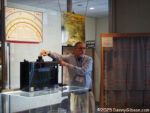
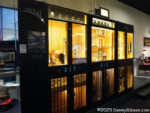 When the United States entered World War II, Cincinnati’s WLW was using this 50,000-watt transmitter to broadcast entertainment to South America via shortwave. The newly created Voice of America initially rented the transmitter and started broadcasting on February 1, 1942, less than two months after the bombing of Pearl Harbor. In the second picture, Joe, our guide, demonstrates how shortwave signals reflect off of the ionosphere and bounce around the globe.
When the United States entered World War II, Cincinnati’s WLW was using this 50,000-watt transmitter to broadcast entertainment to South America via shortwave. The newly created Voice of America initially rented the transmitter and started broadcasting on February 1, 1942, less than two months after the bombing of Pearl Harbor. In the second picture, Joe, our guide, demonstrates how shortwave signals reflect off of the ionosphere and bounce around the globe.
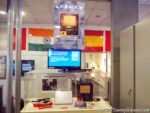
 The Volksempfänger (people’s receiver) existed to bring Nazi propaganda into German homes, and USSR-built transistor receivers did the same for the Soviet Block. The VOA never managed to get its programming to the Volksempfängers, but the BBC did. People figured out how to tweak the Soviet radios to pick up both. Incidentally, VOA has never broadcast propaganda, rightfully believing that broadcasting the truth is more effective.
The Volksempfänger (people’s receiver) existed to bring Nazi propaganda into German homes, and USSR-built transistor receivers did the same for the Soviet Block. The VOA never managed to get its programming to the Volksempfängers, but the BBC did. People figured out how to tweak the Soviet radios to pick up both. Incidentally, VOA has never broadcast propaganda, rightfully believing that broadcasting the truth is more effective.
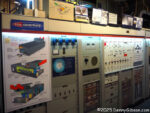
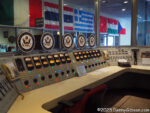
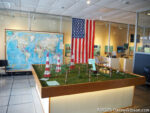 Within about a year and a half, the building that is now the museum was complete, equipment was in place, and a huge array of antennas was erected. The last picture is just the front panels of the 250,000-watt transmitter, which is not just room-sized — it’s a room. I think at least half of our tour group stepped inside at the same time without a hint of crowding.
Within about a year and a half, the building that is now the museum was complete, equipment was in place, and a huge array of antennas was erected. The last picture is just the front panels of the 250,000-watt transmitter, which is not just room-sized — it’s a room. I think at least half of our tour group stepped inside at the same time without a hint of crowding.
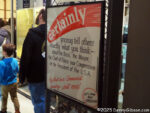 Here is something left over from World War II that is still pretty useful.
Here is something left over from World War II that is still pretty useful.

Pingback: Early TV Museum | Denny G's Road Trips Blog